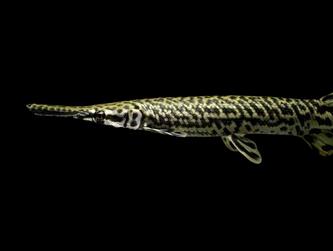
The United Nations has declared 2020 the International Year of Plant Health, and today’s terrestrial invasive species pose one of the greatest threats to the health of plants across all ecosystems.
Rob Venette, director of the Minnesota Invasive Terrestrial Plants & Pests Center (MITPPC) at the University of Minnesota, answers questions about terrestrial invasive species and the latest interdisciplinary research helping to slow their spread.
Q: What are terrestrial invasive species?
Dr. Venette: A terrestrial invasive species is any nonnative plant, animal, insect or microbe that can cause harm. They can spread rapidly and threaten ecosystems, wildlife, recreation, food security, the economy and sometimes our health. Invasive species cost Minnesotans roughly $3 billion each year and continue to show up in new places all the time as environmental conditions, land use patterns and human habits change.
Q: What terrestrial invasive species are in Minnesota?
Dr. Venette: Unfortunately, many hundreds of invasive plants, insects and plant diseases have made their way into Minnesota. Our center prioritizes the creation of new, science-based solutions for the most immediate threats among them. These include familiar offenders like the emerald ash borer, buckthorn and oak wilt; still-emerging threats like the brown marmorated stink bug; and potentially devastating pests like the mountain pine beetle that have yet to reach our state.
Q: Why are terrestrial invasive species a problem?
Dr. Venette: Terrestrial invasive species affect our daily lives (and pocketbooks) in many ways. For example: Dutch elm disease, buckthorn, jumping worms, garlic mustard and other problem species have dramatically changed the way our forests look and feel. Invasive species threaten the diversity of native plants, pollinators and wildlife across all ecosystems. Controlling these invasives also often carries both an environmental and economic cost due to the use of pesticides and the investment of human labor.
Q: How can I help in the fight against terrestrial invasive species?
Dr. Venette: There are many ways that Minnesotans can help the invasive species research community from their own backyards. It starts with learning what invasive species are active in your area and how to identify them with the assistance of resources like U of M Extension and EDDMapS Midwest. Pest sightings reported to the the Great Lakes Early Detection Network (GLEDN) app help our researchers track the spread of different species over time. Attending a community invasive species removal event is a great way to get involved with management. Those living in Greater Minnesota can also become a citizen scientist with our “Cover it Up!” project, helping to test a new approach to buckthorn control with native plantings.
Q: What is the University of Minnesota doing about terrestrial invasive species?
Dr. Venette: The Minnesota Invasive Terrestrial Plants & Pests Center (MITPPC) at the University of Minnesota is leading the way with coordinated, innovative and practical research. We support work that makes a difference on the ground. Our world-class experts have invested thousands of hours and more than $17 million to date working across disciplines to generate fresh ideas for control and detection – from grazing goat herds to high-flying drones. Our center’s continued priority is to protect our forests, prairies, wetlands and farmlands from harm by invasive species now and far into the future. You can learn more about the latest discoveries in invasive species research as they happen via our monthly newsletter and online at www.MITPPC.umn.edu.
Rob Venette is an adjunct associate professor in the Department of Entomology, director of the Minnesota Invasive Terrestrial Plants & Pests Center and a research biologist with the U.S. Forest Service. His areas of expertise include forecasting the distribution of new invasive species and assessing the risks that they pose to Minnesota, the United States or all of North America.
About “Talking...with U of M”
“Talking...with U of M” is a resource whereby University of Minnesota faculty answer questions on current and other topics of general interest. Feel free to republish this content. If you would like to schedule an interview with the faculty member or have topics you’d like the University of Minnesota to explore for future “Talking...with U of M,” please contact University Public Relations at [email protected].
- Categories:
- Agriculture and Environment





